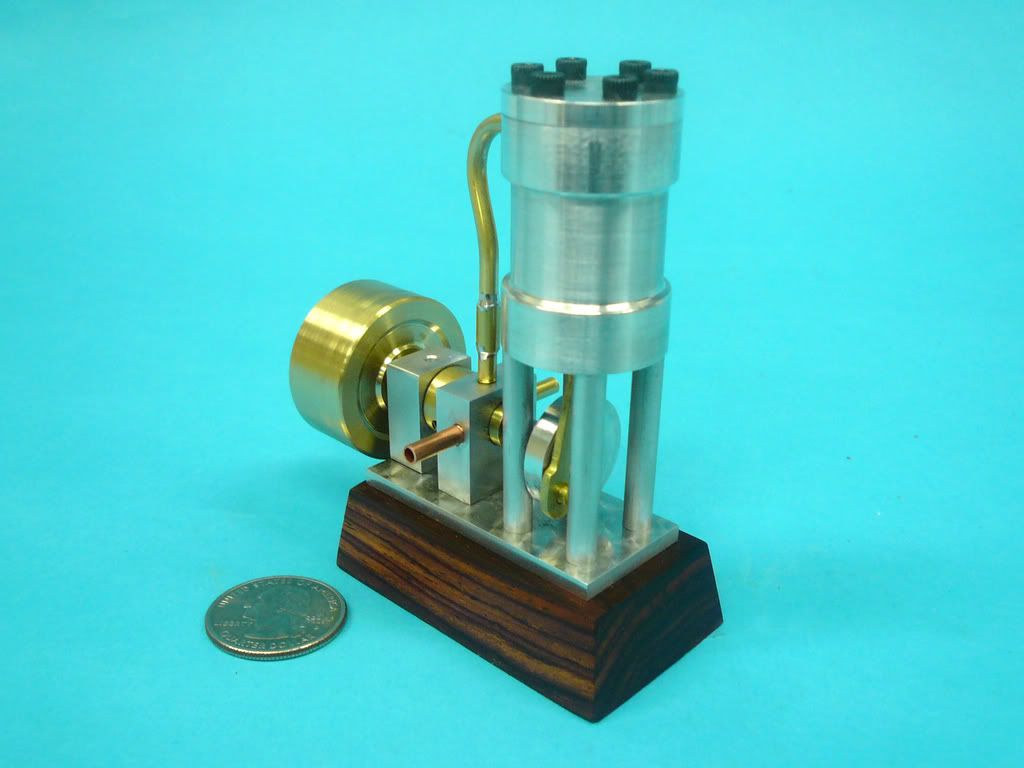I found a box of Popular Mechanics magazines from the 50's up to the late 70's in the attic of my mother house when she bought it in 1993.
As a mechanically inclined 13 year old, I was thrilled with my find. The one issue that I found that really caught my attention was the Feb 1973 issue. This issue had an article about building a steam engine entitled, "Tiny Steam engine for the beginning machinist" by John Burroughs.
This article is what I attribute to the spark that inspired me to move down the machinist trade. In a way I feel I owe my career decision to John Burroughs for inspiring me with his article. I can remember as a 13 year old thinking that, "One day I would have my own lathe!" Now I am the owner of a tool and die shop.
Recently I printed this article out and tacked it on one of the shop walls. I still haven't made that steam engine but I want to as it was the spark that got me headed down the machinist road.
Has anyone built one of these? If so I would be very interested in seeing it.
Thanks
Greebe
Oh and here is the article for those who are interested.


As a mechanically inclined 13 year old, I was thrilled with my find. The one issue that I found that really caught my attention was the Feb 1973 issue. This issue had an article about building a steam engine entitled, "Tiny Steam engine for the beginning machinist" by John Burroughs.
This article is what I attribute to the spark that inspired me to move down the machinist trade. In a way I feel I owe my career decision to John Burroughs for inspiring me with his article. I can remember as a 13 year old thinking that, "One day I would have my own lathe!" Now I am the owner of a tool and die shop.
Recently I printed this article out and tacked it on one of the shop walls. I still haven't made that steam engine but I want to as it was the spark that got me headed down the machinist road.
Has anyone built one of these? If so I would be very interested in seeing it.
Thanks
Greebe
Oh and here is the article for those who are interested.








